#Royal Institution
Explore tagged Tumblr posts
Text

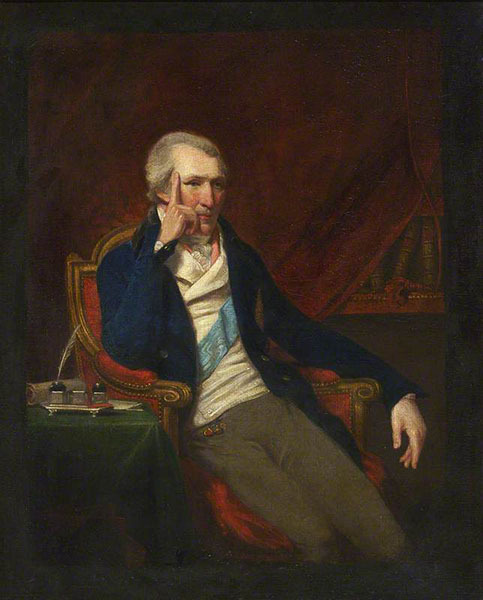

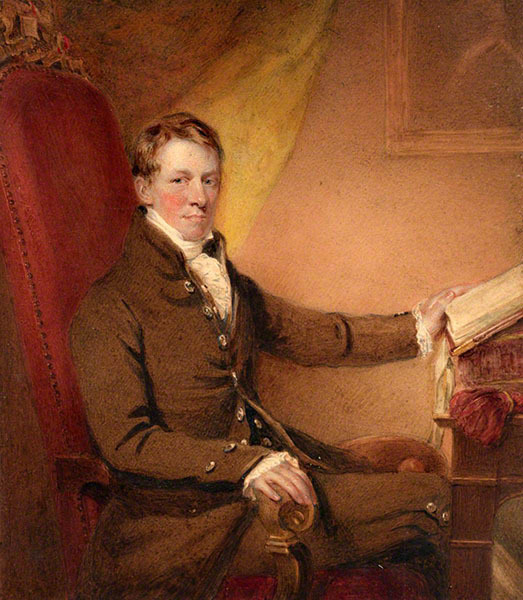


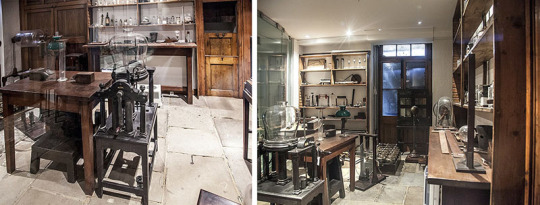
Royal Institution of Great Britain – Scientist of the Day
The Royal Institution of Great Britain (usually called the RI) was founded Mar. 7, 1799, at the home of Sir Joseph Banks, the President of the Royal Society.
read more...
#Royal Institution#popular science histsci#histSTM#19th century#history of science#Ashworth#Scientist of the Day
16 notes
·
View notes
Text
Offences Against Royal Institution Must Be Taken Seriously NOW: Police
Offences against the Royal Institution must be taken seriously if not all the royals will be the target of slander. This was said by Inspector General of Police, Razarudin Husain yesterday. Royal Institution He adds that the case facing the Kedah caretaker MB, Muhammad Sanusi Md Nor, is different compared to other leaders because it involves royalties. The Sanusi case involved the Yang…

View On WordPress
0 notes
Text

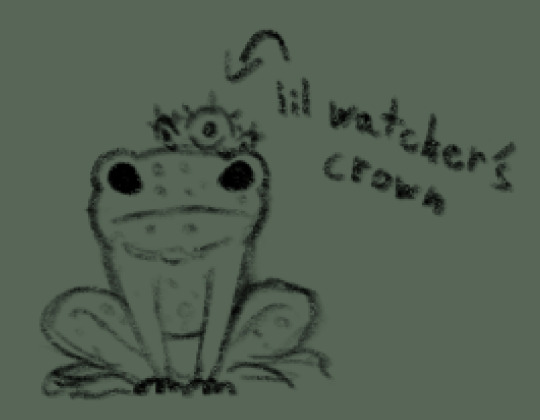

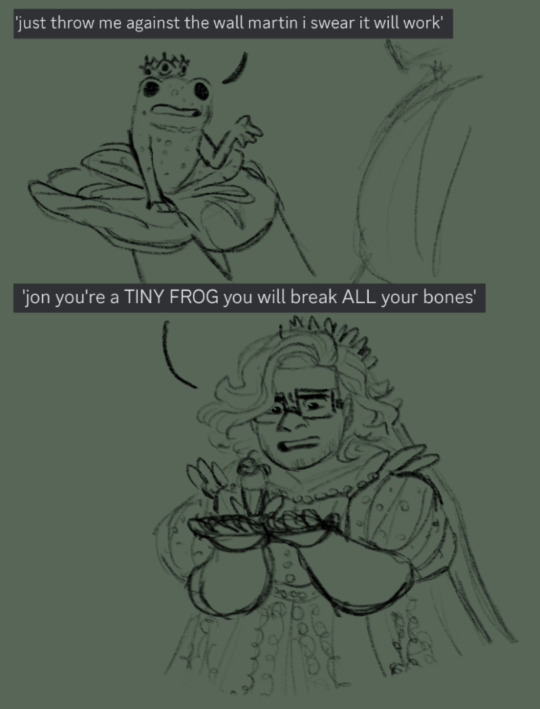
Frog Prince au, based on a short conversation I had with some folks 🐸👑
#tma#the magnus archives#the magnus institute#the magnus pod#the magnus archive fanart#tma art#tma fanart#magpod#magnus pod#jonathan sims#jon sims#martin blackwood#jmart#jonmartin#jonmartin fanart#fairytale au#royal au#tma au#frog prince#frog prince au#clairebear art
2K notes
·
View notes
Text
If you think Wille giving up the crown and freeing himself means he will continue to have no interests or hobbies or goals outside of being with Simon then you missed the entire point of the ending.
Wille was never given the luxury of choosing his own hobbies or his own interests because he always did what was expected of him. He was forced to take music lessons as a kid. He joined the rowing team because that’s what his brother did. He partook in royal duties in season 3 because he felt like he had to. He has no idea what he likes or what he wants to do because his life was always planned out for him, even more so when he became the crown prince.
When he frees himself from the expectations of the crown and his family at the end, he’s now free to figure out what he likes, what he wants to do, where he wants to go. The world is finally his oyster. He’s fucking 17-years-old. He has all the time in the world to figure it out. I didn’t have the pressure of the monarchy and I had literally zero clue what I wanted to do. Wille has all the time in the world to figure it out. He doesn’t have any practical skills, but he’s also literally 17-years-old. In what world does even a regular, everyday 17-year-old have any or all that are needed? I personally didn’t even get a job until I was 19 and didn’t enter my current career until I was 26. He has time.
By choosing himself, Wille also chooses Simon, because Simon is and always will be a part of him, but that doesn’t mean Simon will continue to be the only thing in his life. The ending of the series is also the beginning of a new chapter in Wille’s life - where everything is unwritten and the possibilities are endless.
#young royals#yr#Wilhelm#wilmon#seriously the amount of bs I’ve seen about Wille having no life skills to exist outside the institution he was born into is so absurd#he’s literally a kid
584 notes
·
View notes
Text
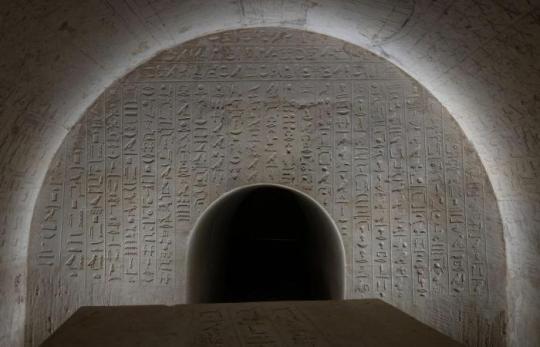
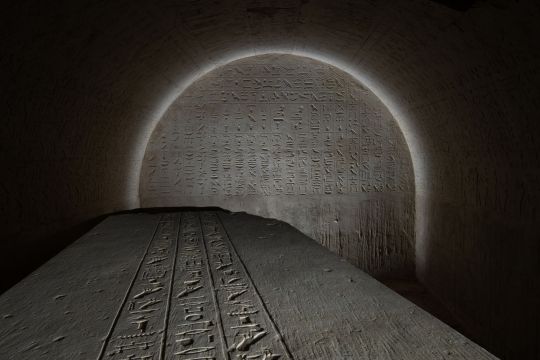
The Tomb of a Royal Scribe Discovered in Egypt
Czech experts have made another important discovery in the Egyptian archaeological site in Abusir. They found the hitherto unexplored tomb of the royal scribe Dzhehutiemhat, which is richly decorated in the form of many hieroglyphic texts and images. They mainly consist of ritual and religious texts, which were supposed to ensure the soul of the deceased an eternal life in the next world.
In April and May of this year, another part of field research by Czech Egyptologists regarding shaft tombs from the middle of the first millennium BC took place in Abusir, Egypt. It was here that the archaeological team of the Czech Institute of Egyptology of the Faculty of Arts of Charles University discovered the tomb of a hitherto unknown dignitary from the time of the Persian invasion of Egypt.

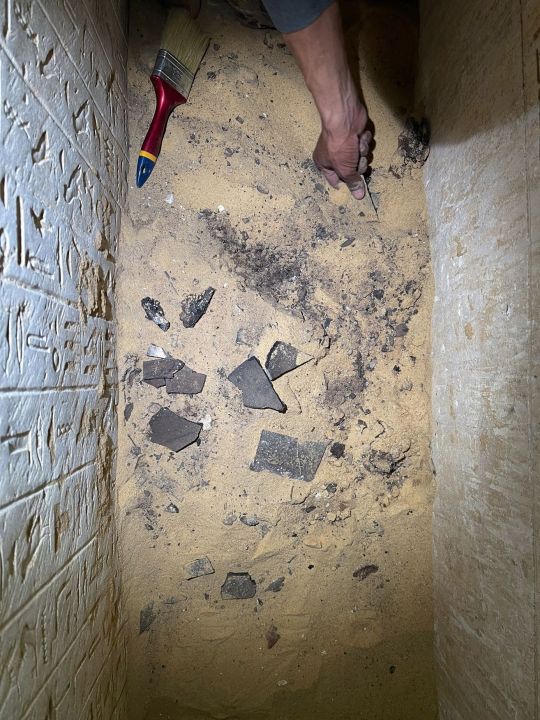
“It is a richly decorated shaft tomb of medium size, whose owner, a certain Džehutiemhat, held the office of royal scribe,” explains Ladislav Bareš, who has been coordinating the research of Abusir shaft tombs for a long time.
From the tomb, the above-ground part of which was destroyed already in ancient times, only the main shaft was preserved, at the bottom of which lay a burial chamber made of limestone blocks at a depth of 14 meters. Access to it was provided by a small, more northerly shaft and a narrow corridor approximately three meters long connecting the access shaft with the burial chamber.
For reasons still unknown, this access shaft was largely filled with several dozen decorated limestone blocks, originating from the dismantled above-ground part of the nearby majestic tomb of General Menechibnekon.
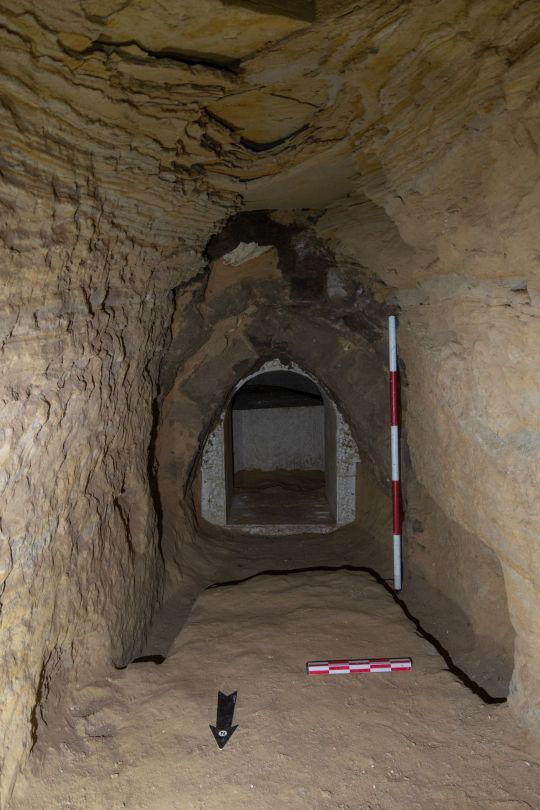
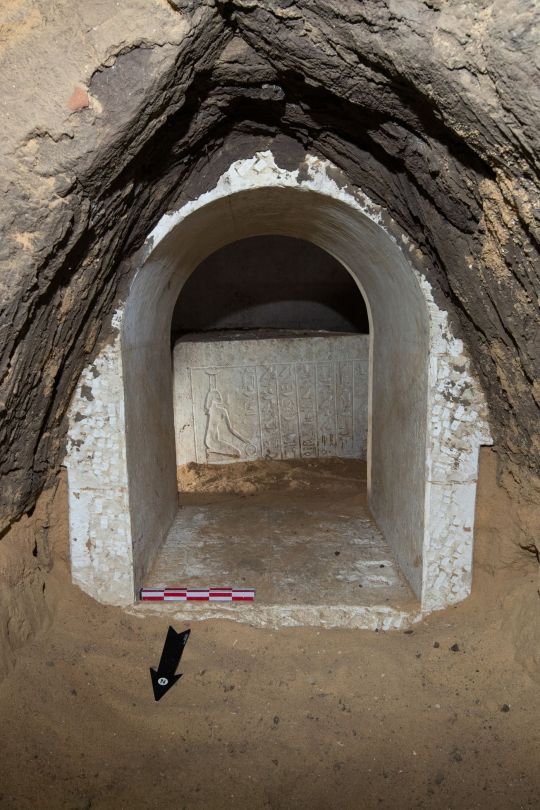
A tomb with rich decoration
The burial chamber is richly decorated with texts and other scenes. A long sequence of incantations against snakebite from the Pyramid Texts covers the north entrance wall. Interestingly, the snakes mentioned in these magical texts represented a potential danger, but could also serve as powerful protectors of the deceased and his mummy.
“While the entrance to the nearby Menechibnekon’s burial chamber was protected by the guardians of the gates of the 144th chapter of the Book of the Dead, in the case of Džehutiemhat, snakes from the Pyramid Texts play this role,” adds Renata Landgráfová, director of the Institute of Egyptology and an expert on the ancient Egyptian language and texts.
The south and west walls are covered with a sacrificial ritual and an extensive sacrificial list. On the ceiling of the burial chamber are depictions of the journey of the sun god Reo through the sky, first in the morning and then in the evening celestial bar. The depictions are accompanied by hymns to the rising and setting sun. Inside the burial chamber covered with relief decoration is a large stone sarcophagus, which also bears hieroglyphic inscriptions and depictions of gods, both outside and inside. The lid is decorated with texts taken from the Book of the Dead, but also excerpts from the much older Pyramid Texts, which partially repeat sayings that also appear on the walls of the burial chamber.
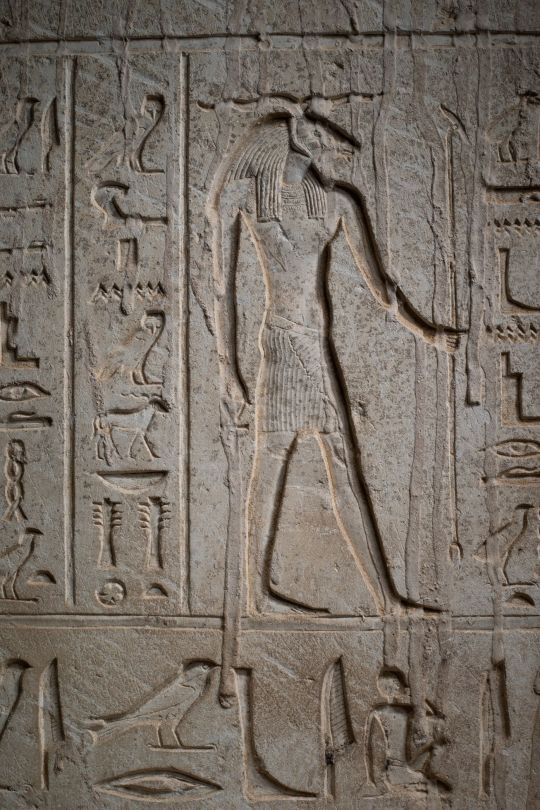

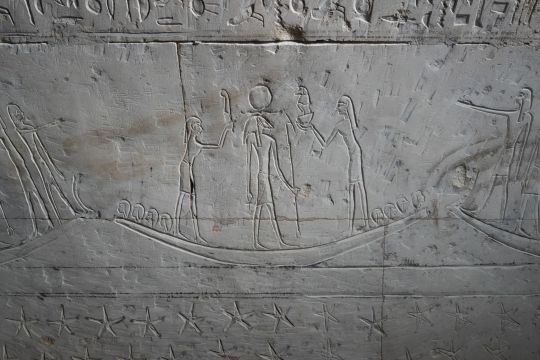
Ritual texts for eternal life
On the bottom of the inner wall of the sarcophagus bath, the goddess of the west, Imentet, is depicted, and its inner sides bear the so-called canopic sayings, spoken by this goddess and the earth god Geb. “The goddess of the west inside the sarcophagus represents the protector, guide and symbolic mother of the deceased,” explains Jiří Janák, who analyzes and interprets religious and magical texts as part of field research.
All the mentioned spiritual-ritual texts were supposed to ensure the deceased a smooth entry into a blissful and well-secured eternal life in the afterlife.
The tomb of the scribe Dzhehutiemhat was discovered almost empty, as it was robbed probably already in the 5th century AD, similar to other tombs in this burial ground.
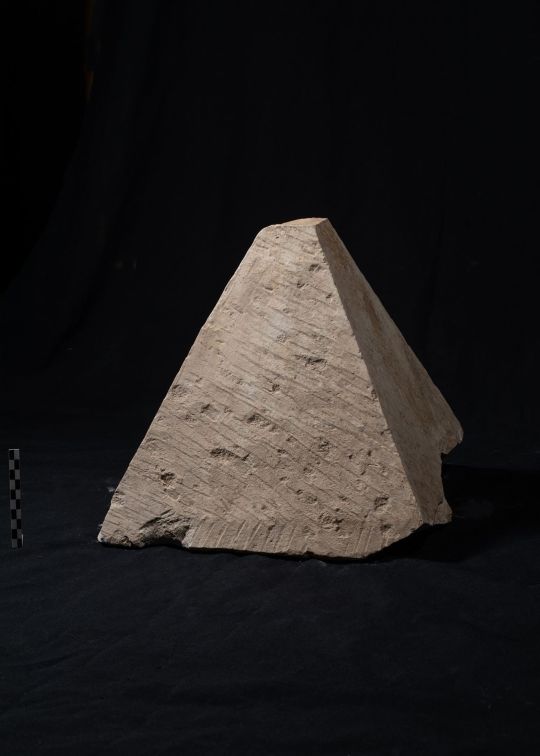
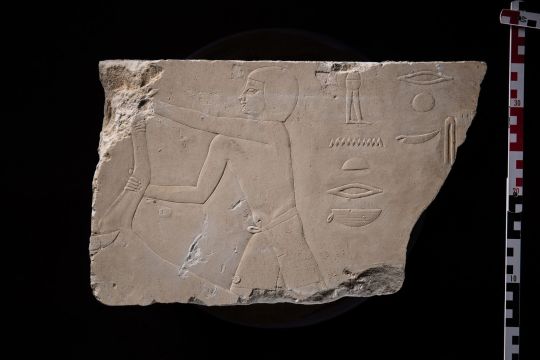

The deceased suffered from sedentary work
From the anthropological analysis of the skeletal remains, which was carried out by leading Egyptian experts, it was found that Dzhehutiemhat died at a relatively early age of around 25 years, he bore the signs of a kind of occupational disease (wear and tear of the spine during sedentary work) and suffered from severe osteoporosis, i.e. thinning of the bones.
The latter fact could place him in the family of other inhabitants of the Abusir shaft tomb burial, in whom the disease was also confirmed, such as the famous Iufaa, the owner of a nearby much larger tomb, whose unlooted burial chamber was discovered in 1996.
It is therefore possible that most of the owners of the tombs buried in this part of the Abusir necropolis belonged to one extended family, firmly anchored in the military elite of late Saiyan Egypt. However, Dzhehutiemhat’s mother probably came from completely different circles and a different part of Egypt at that time. Her two names can be translated as “Nubian” and “Fox”, while the latter is written in an unusual, most likely Berber form.
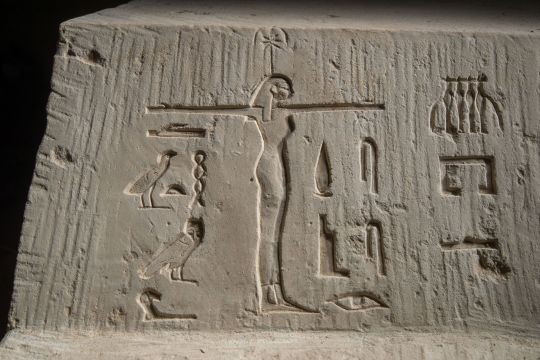
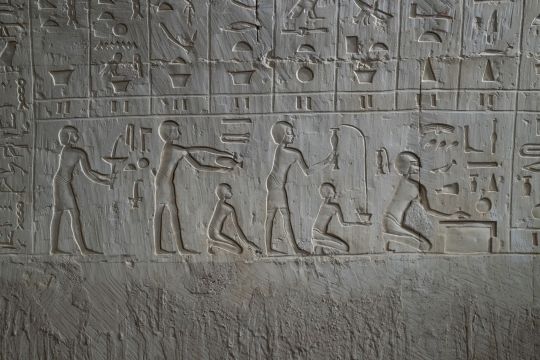
They also found a collection of pottery in the tomb. “The discovery of a large fragment of a Chian amphora with a perfectly smoothed edge is also very interesting, because the ancient looters probably used it as a shovel,” says Květa Smoláriková, who is an expert on Egyptian ceramics and Greek imports in the Czech team.
“The recently discovered tomb of the dignitary Džehutiemhat on the Abusír archaeological concession is the latest piece of knowledge in the mosaic of the history of ancient Egypt at the end of its glory in the late period, in the 6th century BC,” says Miroslav Bárta, director of Czech archaeological research in Abusír, about the discovery.
“The shaft tombs represent a special type of tombs of this time. They were created as a specific attempt by the ancient Egyptian elites for a renaissance and are based on the form of the tomb of King Djoser, the founder of the famous Old Kingdom, the time of the pyramid builders in the 3rd millennium BC,” he adds.
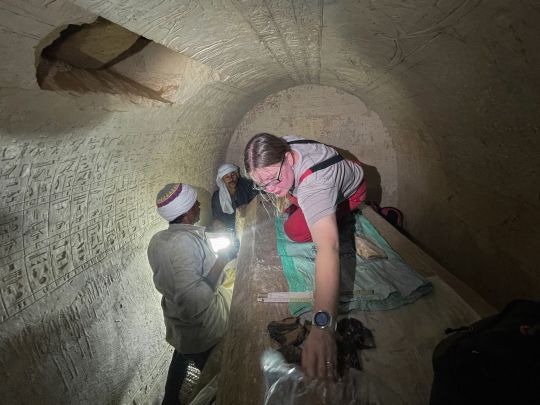
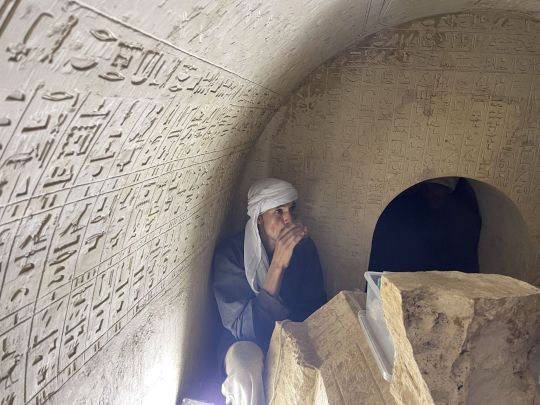
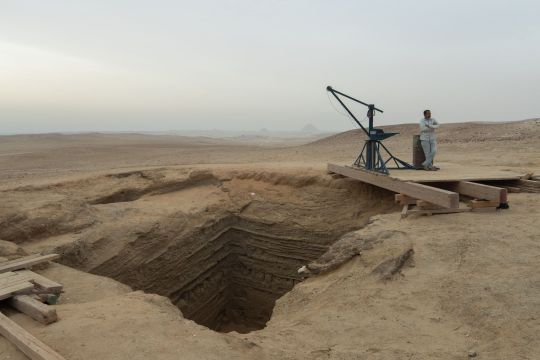
#The Tomb of a Royal Scribe Discovered in Egypt#Abusir Egypt#Dzhehutiemhat#first millennium BC#ancient tomb#ancient grave#ancient artifacts#burial chamber#Czech Institute of Egyptology#archeology#archeolgst#history#history news#ancient history#ancient culture#ancient civilizations#ancient egypt#egyptian history#egyptian art#long reads
428 notes
·
View notes
Text
best season yet but also, you know, kinda missing a cunty blonde court jester who has very little influence on the plot, though i might be biased
#(i am whatever 🙄)#in my heart they didn't send him to doggy heaven#he's just bothering people at a different government institution#royal mail perhaps#slow horses
69 notes
·
View notes
Text
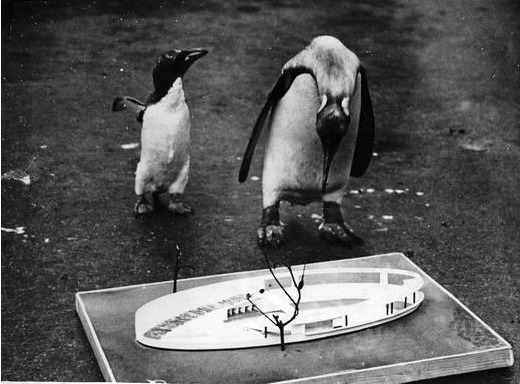
Two penguins “inspect” an architectural maquette of the new Penguin Pond, London Zoo.
Photograph by John Havinden, 1934 (RIBA)
#penguins#birds#avians#london#zoological society of london#1930s#1934#ZSL#animal photography#RIBA#royal institute of british architecture#do you think they liked it?
229 notes
·
View notes
Text
Cyberbullying in Heartstopper and Young Royals
In Heartstopper, the audience has sympathy for Charlie and Tara when they are verbally bullied or cyberbullied in the show. We understand the affect these things have on their wellbeing.
In Young Royals, Simon is verbally bullied and cyberbullied the whole show, escalating in season 3. Yet the audience has less sympathy for him and his wellbeing.
I think the reason is that we see Simon standing up for himself against the verbal bullying, so we think he can handle it. He is a strong person, so he should be able to handle it. He has a support system of a good mum and friends at home. However, when he uses this admired personality trait and stands up for himself against cyberbullying, the audience immediately decides that that's not appropriate.
The audience empathy for Simon's experience each episode of Season 3 declines even as the stress on him builds. Why? I think it's because in parallel, Wille's pressures increase. Many make the judgement call that Wille's pressures are more pressing than Simon's and that Wille is not strong enough to deal with them. He has no support. He needs Simon's and only Simon's support. (Even though he has good mental health support in Boris, who is a paid professional, understanding of his pressures through his work with Erik and could help him navigate his stress).
The audience sees Simon's stresses as minor and self-involved. Why is he affected by it? He doesn't give AF about stuff people say. Strong people can't be affected by daily relentless verbal and cyberbullying. Right?
We understand the enormity of these stresses in the Heartstopper environment. We understand why Charlie and Tara, as 15 and 16 year old kids are continuing to read comments and are affected by them. Simon is a 16 year old kid and his comments are coming from people in his town, his country even, not just his school. Is it because Charlie and Tara are not strong characters like Simon? I think they are strong. The point is, no one is strong enough for this onslaught.
Charlie and Tara both get real sympathy and support from their partners for what they are going through. Even as both Darcy and Nick are going through their own pressures. Wille is not able to do this for Simon, until Simon and his family are physically threatened. Support mostly goes one way in their relationship in Season 3.
For the audience, Simon's stress starts to become an obstacle to Wille being able to perform his role as Crown Prince and to relieve his sick mum. The audience is geared to Wille becoming the best CP he can be, and start to see Simon's 'selfish stressors' as an obstacle to that role.
Wille is also a victim of cyberbullying. Simon, in support of Wille, is concerned about that and is standing up for both of them in the comments and the perception of them as people and their relationship. When Wille tells Simon that this is how it always is, Simon is concerned with Wille resigning to that state of affairs. It's not acceptable in Simon's world view.
That, to me, is to be admired. I don't see it as naive, even as the boyfriend of a public person. All over the world, young people are challenging the status quo of the social contracts we have in society. "This is how it's always been" has been a refrain that we no longer accept. In Wille's Song, Simon sings to Wille and to the audience, "we do not have to follow the way of others and where it leads." Simon was the revolution for the show and the audience. When watching the show again with this perspective instead of Wille's goal to be the Crown Prince that his brother would have wanted him to be, empathy and balance are restored.
This is all a post to say: all bullying, specifically cyberbullying, is a very dangerous thing. It can not be minimised how damaging it is. People in every domain are greatly affected by it. No matter how strong or how old or how famous or how rich they are. Blaming the victims by saying they should ignore the onslaught, the defamation of character, all the isms innate in the bullying (every identity of Simon's is targeted: his race, his class, his nationality, his sexuality), is ridding the public of accountability when they post online about any person. It is saying that it is socially acceptable to bully online. Once one has a social media account, we are accepting the social contract that we will forever be open to this abuse. And that it is our fault if we can not manage it. (Like (in jest) shouting at Wille and Simon to close the curtains because they should always expect that someone is filming them having sex).
#the monarchy as a symbol of all institutions that need to be questioned and re-examined#mental health in young royals#mental health in Heartstopper#mental health in young people#affects of cyberbullying#simon's mental health and casual bullying throughout the show becomes so normalised and overlooked#young royals#simon eriksson#young royals analysis
98 notes
·
View notes
Text
because babel wasn't what i thought on the surface. i was only intrigued by the royal institute of translation. but then robin held my hand and walk me through his life from calcutta to hampstead then to oxford. and it was lovely, i loved every second of it because he did. he adored the place so did i. until problem ensued. economy, politic, colonialism, sexism, racism, everything that i thought wouldn't find in here. i held on his hand thinking we'd survive it all. but the loses along the way, the grief, he wasn't prepared for that, so did i. and i was angry about it because i felt it too. then we saw the end of it and i just couldn't let it all go.
#noo im still not over it omg#babel an arcane history#babel rf kuang#babel#royal institute of translation#robin swift#ramiz rafi mirza#victoire desgraves#griffin harley
246 notes
·
View notes
Text
Happy #DinosaurDay #1:
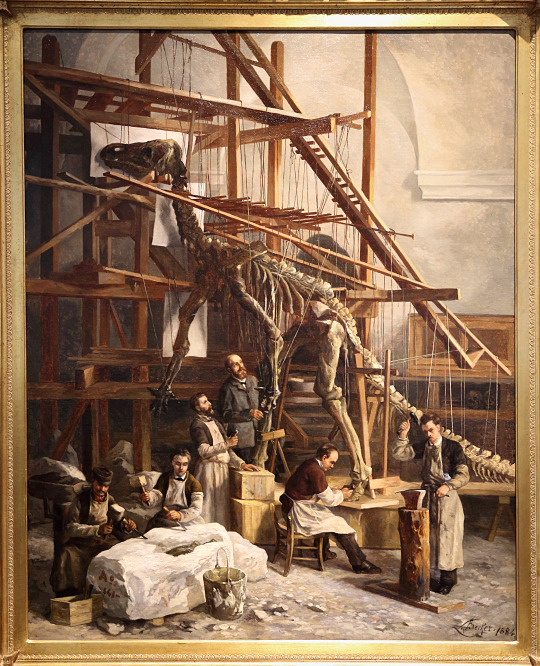
1884 painting by Léon Becker (Belgian, 1826-1909), exhibited at Royal Belgian Institute of Natural Sciences representing the mounting of the 1st Iguanodon of Bernissart at St. George Chapel in Brussels in 1882.
#animals in art#animal holiday#european art#19th century art#painting#Belgian art#natural history art#Leon Becker#Royal Belgian Institute of Natural Sciences#paleontology#history of science#dinosaur#Dinosaur Day#skeleton#Iguanodon
108 notes
·
View notes
Text


I feel like there's a symbolism to see here
#amphibia#anne boonchuy#my posts#the royal symbol#the fact that both scenes take place in the plantar farm#the fact that in both scenes anne was being pressured to change something about herself (first by the tax toads and later by marcy)#and she rejects them both#also the toad tower brooch representing the force of the State through culturally legitimized institutions of violence#and Frobo being a literal weapon of conquest turned into a farmer through love and through being ''defective'' (rejecting its intended#state-given purpose) becoming then a being of life and creation rather than death and destruction#do you see what i'm seeing#anne seeing herself through a mirror made of violence domination and subjugation vs seeing herself through a mirror made of#self-creation and love and free will and creation and and
35 notes
·
View notes
Text
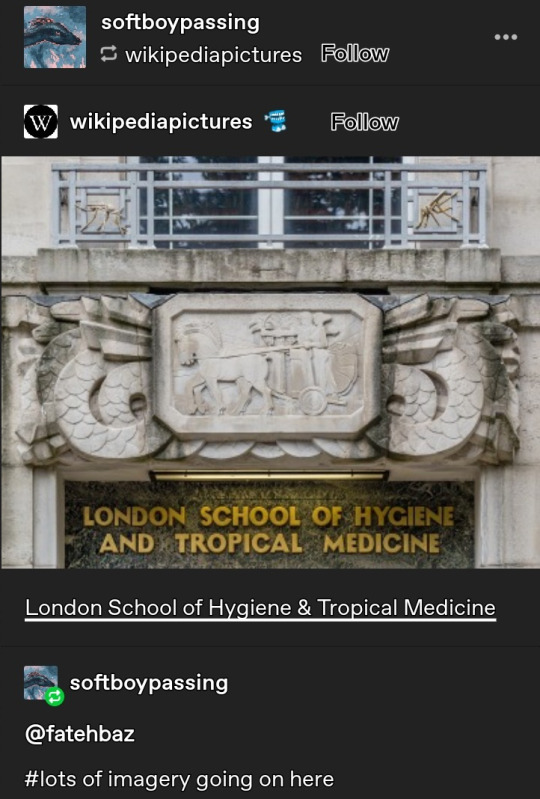
"defending civilization against bugs"
lol the mosquito sculpture

see Pratik Chakrabarti's Medicine and Empire: 1600-1960 (2013) and Bacteriology in British India: Laboratory Medicine and the Tropics (2012)
---
Sir Ronald Ross had just returned from an expedition to Sierra Leone. The British doctor had been leading efforts to tackle the malaria that so often killed English colonists in the country, and in December 1899 he gave a lecture to the Liverpool Chamber of Commerce [...]. [H]e argued that "in the coming century, the success of imperialism will depend largely upon success with the microscope."
Text by: Rohan Deb Roy. "Decolonise science - time to end another imperial era." The Conversation. 5 April 2018.
---
---
---
[A]s [...] Diane Nelson explains: The creation of transportation infrastructure such as canals and railroads, the deployment of armies, and the clearing of ground to plant tropical products all had to confront [...] microbial resistance. The French, British, and US raced to find a cure for malaria [...]. One French colonial official complained in 1908: “fever and dysentery are the ‘generals’ that defend hot countries against our incursions and prevent us from replacing the aborigines that we have to make use of.” [...] [T]ropical medicine was assigned the role of a “counterinsurgent field.” [...] [T]he discovery of mosquitoes as malaria and yellow fever carriers reawakened long-cherished plans such as the construction of the Panama Canal (1904-1914) [...]. In 1916, the director of the US Bureau of Entomology and longtime general secretary of the American Association for the Advancement of Science rejoiced at this success as “an object lesson for the sanitarians of the world” - it demonstrated “that it is possible for the white race to live healthfully in the tropics.” [...] The [...] measures to combat dangerous diseases always had the collateral benefit of social pacification. In 1918, [G.V.], president of the Rockefeller Foundation, candidly declared: “For purposes of placating primitive and suspicious peoples, medicine has some decided advantages over machine guns." The construction of the Panama Canal [...] advanced the military expansion of the United States in the Caribbean. The US occupation of the Canal Zone had already brought racist Jim Crow laws [to Panama] [...]. Besides the [...] expansion of vice squads and prophylaxis stations, during the night women were picked up all over the city [by US authorities] and forcibly tested for [...] diseases [...] [and] they were detained in something between a prison and hospital for up to six months [...] [as] women in Panama were becoming objects of surveillance [...].
Text by: Fahim Amir. "Cloudy Swords." e-flux Journal Issue #115. February 2021.
---
---
---
Richard P. Strong [had been] recently appointed director of Harvard’s new Department of Tropical Medicine [...]. In 1914 [the same year of the Canal's completion], just one year after the creation of Harvard’s Department of Tropical Medicine, Strong took on an additional assignment that cemented the ties between his department and American business interests abroad. As newly appointed director of the Laboratories of the Hospitals and of Research Work of United Fruit Company, he set sail in July 1914 to United Fruit plantations in Cuba, Guatemala, Honduras, Costa Rica, and Panama. […] As a shareholder in two British rubber plantations, [...] Strong approached Harvey Firestone, chief executive of the tire and rubber-processing conglomerate that bore his name, in December 1925 with a proposal [...]. Firestone had negotiated tentative agreements in 1925 with the Liberian government for [...] a 99-year concession to optionally lease up to a million acres of Liberian land for rubber plantations. [...]
[I]nfluenced by the recommendations and financial backing of Harvard alumni such as Philippine governor Gen. William Cameron Forbes [the Philippines were under US military occupation] and patrons such as Edward Atkins, who were making their wealth in the banana and sugarcane industries, Harvard hired Strong, then head of the Philippine Bureau of Science’s Biological Laboratory [where he fatally infected unknowing test subject prisoners with bubonic plague], and personal physician to Forbes, to establish the second Department of Tropical Medicine in the United States [...]. Strong and Forbes both left Manila [Philippines] for Boston in 1913. [...] Forbes [US military governor of occupied Philippines] became an overseer to Harvard University and a director of United Fruit Company, the agricultural products marketing conglomerate best known for its extensive holdings of banana plantations throughout Central America. […] In 1912 United Fruit controlled over 300,000 acres of land in the tropics [...] and a ready supply of [...] samples taken from the company’s hospitals and surrounding plantations, Strong boasted that no “tropical school of medicine in the world … had such an asset. [...] It is something of a victory [...]. We could not for a million dollars procure such advantages.” Over the next two decades, he established a research funding model reliant on the medical and biological services the Harvard department could provide US-based multinational firms in enhancing their overseas production and trade in coffee, bananas, rubber, oil, and other tropical commodities [...] as they transformed landscapes across the globe.
Text by: Gregg Mitman. "Forgotten Paths of Empire: Ecology, Disease, and Commerce in the Making of Liberia's Plantation Economy." Environmental History, Volume 22, Number 1. January 2017. [Text within brackets added by me for clarity and context.]
---
---
---
[On] February 20, 1915, [...] [t]o signal the opening of the Panama-Pacific International Exposition (PPIE), [...] [t]he fair did not officially commence [...] until President Wilson [...] pressed a golden key linked to an aerial tower [...] whose radio waves sparked the top of the Tower of Jewels, tripped a galvanometer, [...] swinging open the doors of the Palace of Machinery, where a massive diesel engine started to rotate. [...] [W]ith lavish festivities [...] nineteen million people has passed through the PPIE's turnstiles. [...] As one of the many promotional pamphlets declared, "California marks the limit of the geographical progress of civilization. For unnumbered centuries the course of empire has been steadily to the west." [...] One subject that received an enormous amount of time and space was [...] the areas of race betterment and tropical medicine. Indeed, the fair's official poster, the "Thirteenth Labor of Hercules," [the construction of the Panama Canal] symbolized the intertwined significance of these two concerns [...]. [I]n the 1910s public health and eugenics crusaders alike moved with little or no friction between [...] [calls] for classification of human intelligence, for immigration restriction, for the promotion of the sterilization and segregation of the "unfit," [...]. It was during this [...] moment, [...] that California's burgeoning eugenicist movement coalesced [...]. At meetings convened during the PPIE, a heterogenous group of sanitary experts, [...] medical superintendents, psychologists, [...] and anthropologists established a social network that would influence eugenics on the national level in the years to come. [...]
In his address titled "The Physician as Pioneer," the president-elect of the American Academy of Medicine, Dr. Woods Hutchinson, credited the colonization of the Mississippi Valley to the discovery of quinine [...] and then told his audience that for progress to proceed apace in the current "age of the insect," the stringent sanitary regime imposed and perfected by Gorgas in the Canal Zone was the sine qua non. [...]
Blue also took part in the conference of the American Society for Tropical Medicine, which Gorgas had cofounded five years after the annexation of Cuba, Puerto Rico, and the Philippines. Invoking the narrative of medico-military conquest [...], [t]he scientific skill of the United States was also touted at the Pan-American Medical Congress, where its president, Dr. Charles L. Reed, delivered a lengthy address praising the hemispheric security ensured by the 1823 Monroe Doctrine and "the combined genius of American medical scientists [...]" in quelling tropical diseases, above all yellow fever, in the Canal Zone. [...] [A]s Reed's lecture ultimately disclosed, his understanding of Pan-American medical progress was based [...] on the enlightened effects of "Aryan blood" in American lands. [...] [T]he week after the PPIE ended, Pierce was ordered to Laredo, Texas, to investigate several incidents of typhus fever on the border [...]. Pierce was instrumental in fusing tropical medicine and race betterment [...] guided by more than a decade of experience in [...] sanitation in Panama [...]. [I]n August 1915, Stanford's chancellor, David Starr Jordan [...] and Pierce were the guests of honor at a luncheon hosted by the Race Betterment Foundation. [...] [At the PPIE] [t]he Race Betterment booth [...] exhibit [...] won a bronze medal for "illustrating evidences and causes of race degeneration and methods and agencies of race betterment," [and] made eugenics a daily feature of the PPIE. [...] [T]he American Genetics Association's Eugenics Section convened [...] [and] talks were delivered on the intersection of eugenics and sociology, [...] the need for broadened sterilization laws, and the medical inspection of immigrants [...]. Moreover, the PPIE fostered the cross-fertilization of tropical medicine and race betterment at a critical moment of transition in modern medicine in American society.
Text by: Alexandra Minna Stern. Eugenic Nation: Faults and Frontiers of Better Breeding in Modern America. Second Edition. 2016.
#literally that post i made earlier today about frustration of seeing the same colonial institutions and leaders showing up in every story#about plantations and forced labor my first draft i explicitly mentioned the harvard school tropical medicine and kew royal botanic garden#abolition#ecology#imperial#colonial#bugs#indigenous#multispecies#civilization vs bugs
233 notes
·
View notes
Text

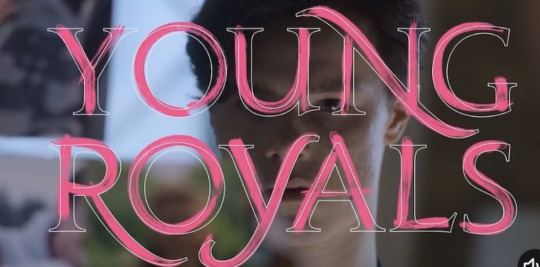

craaazy that some of you are so determined he stays within the mould when the entire show is chronicling him breaking out of it
#it fills in when he takes the role of crown prince after erik's death#and slowly becomes more rough until it's entirely not in the lines anymore#like season 3's logo#young royals#yr s3 spoilers#spoilers#no one yell at me i'm tagging everything#young royals season 3 spoilers#as someone who has grown up working class w a monarchy that sucks the living daylights out of my country#and has caused so much systemic oppression and created the class system that only widens the wealth gap as time moves on#i'm really exhausted by having to explain that wille being a queer king isn't a progressive thing#and that yah this is a tv show but it presents you an opportunity to#rewire your thinking about real life situations and the actual class system#the people at the top are still oppressive even if they're gay#imperialism is still imperialism even if you let gay people go to war#go read red white and royal blue if you want your gay royal fantasy#this is literally a show about the class system#and how historical systems that are held up by institutions like the monarchy#are a bad thing#and can never be progressive#even if you rainbow wash it
189 notes
·
View notes
Text


hayden page glowup :) (2020 / 2024)
#oc#oc art#shes an old rp character im revamping for a server revamp#shes gonna come back evil lol#well#shes tbh not that different. shes still a changeling trying to become royalty.#but last time she didnt know she was a changeling and was just trying to be a perfect little maid and marry a prince#and now the royals have been overthrown so shes trying to institute a new tyranny featuring herself with the help of her newfound fae power
11 notes
·
View notes
Text

grahamshellswell
Stockholm Metro: World’s Longest Art Exhibit
Tekniska Högskolan Station
Kungliga Tekniska Högskolan, the Royal Institute of Technology, was founded in 1827 and got its metro station in 1973. The station’s decor, created by Lennart Mörk, celebrates scientific advances, technology, the laws of nature, etc. The station is full of quotations from famous events in science history and representation of scientific and mathematical formulas/equations etc. The most famous piece is probably the five regular polyhedra which represents Plato’s five elements.

vintergatanphotography
#grahamshellswell#photographer#stockholm#sweden#metro lines#subway#art exhibit#tekniska hogskolan station#royal institute of technology#lennart mork#artist#art#plato#vintergatanphotography
15 notes
·
View notes
Text
No WiFi,
No hot water,
What next?
No electricity?
No roof?
#ooc post#I would say the no roof might actually happen but I have no idea what the IRM is talking about.#IRM = Institut royal météorologiques#but if I understand correctly it's the other side that going to be hit hard#idk
9 notes
·
View notes